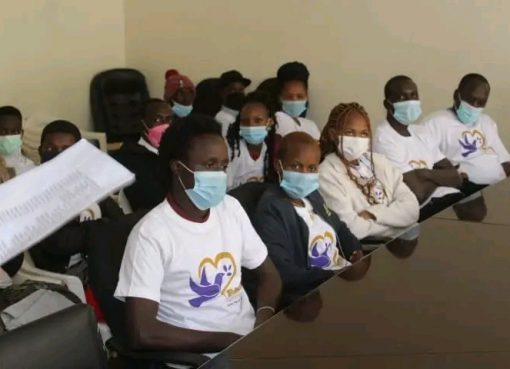The Kenya Medical Research Institute (KEMRI) has successfully piloted a unique research aimed at establishing the actual causes of death among children under 5yrs in Kisumu and Siaya Counties.
The research, the first of its kind in Africa, focuses on mobile mortuary services to establish the causes of death in the respective areas as part of Child Mortality Studies.
The Ag. Director General of KEMRI Prof. Elijah Song’ok and a leading researcher at the Kisumu site Dr, Richard Omore took journalists through the intensive programme which has finally yielded positive results.
Prof. Songo’k revealed during a press briefing today at KEMRI Kisumu that so far, the study has been funded to the tune of US$ 6 million (Sh880million) by the Bill and Melinda Gates Foundation whose CEO Bill Gates visited KEMRI in 2022 to review the progress of the unique and innovative study in the world.
“This unique mobile facility undertaking the Minimal Invasive Testing Sampling (MITs) procedure will be used for Child Health and Mortality Prevention Surveillance (CHAMPS) study” the Director General stated.
The study, he added, collects, analyses and shares evidence needed to design more effective and targeted interventions for the prevention of child mortality in regions where it’s highest like Siaya which has the highest prevalence of infectious diseases.
He noted with appreciation the support KEMRI has so far received from various partners and collaboration toward the unique study with Kenya and more specifically Kisumu site saying they felt greatly honoured to be the inaugural research facility.
Prof. Songo’k said the concept was part of the effort to increase the performance of the study because with MIT vans the samples are quickly obtained in the community within 24 hours and processed fast.
Previously, he explained, there were challenges in transporting bodies to the county mortuary facilities way after 24 hours due to logistical issues.
“Once the bodies are received, the samples are recorded and verbal autopsy are quickly reviewed by a panel of experts called Deciding Course of Death (DECODE) team composed of pathologist, epidemiologist, physicians, paediatricians and virologists who meet to decide the cause of death based on results from the laboratory.
The project is being implemented by KEMRI in collaboration with the Ministry of Health, the county health management team, Henry Jackson Foundation (HJF) and the Centre for Disease Control and Prevention (CDC) with support from (CHAMPS) network program office based in Emory University (USA).
According to the project findings, the leading causes of death among infants and children in Kenya’s study site are; malnutrition, HIV infection and diseases, congenital malformations (birth defects), Pneumonia and Sepsis.
Other important causes of death in children include sickle cell, low birth weight and diarrhoea, explained the don, who added that despite all they are confident that at the end of this study, they shall have critical pointers to the actual cause of mortality for the under 5 and prescribe better policies that prevent such deaths in future.
Dr. Richard Omore who’s the lead researcher at KEMRI Kisumu said the initial preliminary results from the study supported by the MITs van and its accessories are estimated to cost US$ 70,000 (Sh10.5 million) to establish the actual causes of death among children under 5yrs in Kisumu and Siaya.
Dr. Omore revealed that the MIT van concept emanated from the challenges encountered in the process of recording community deaths such as the need for quick burials as witnessed during the coronavirus-related deaths as well as transportation of the bodies among other concerns.
He said through the use of the van in the community setting where death occurs within the required 24 hrs, the panel of experts acted fast in Deciding the Cause of Death (DECODE) which was composed of different experts from various sectors.
“Preliminary results have confirmed the leading and surprising pathogen causing death in children irrespective of age is Klepsiella pneumoniae which has never been appreciated as an important cause of death in past studies.
By Joseph Ouma and Millicent Onyango





